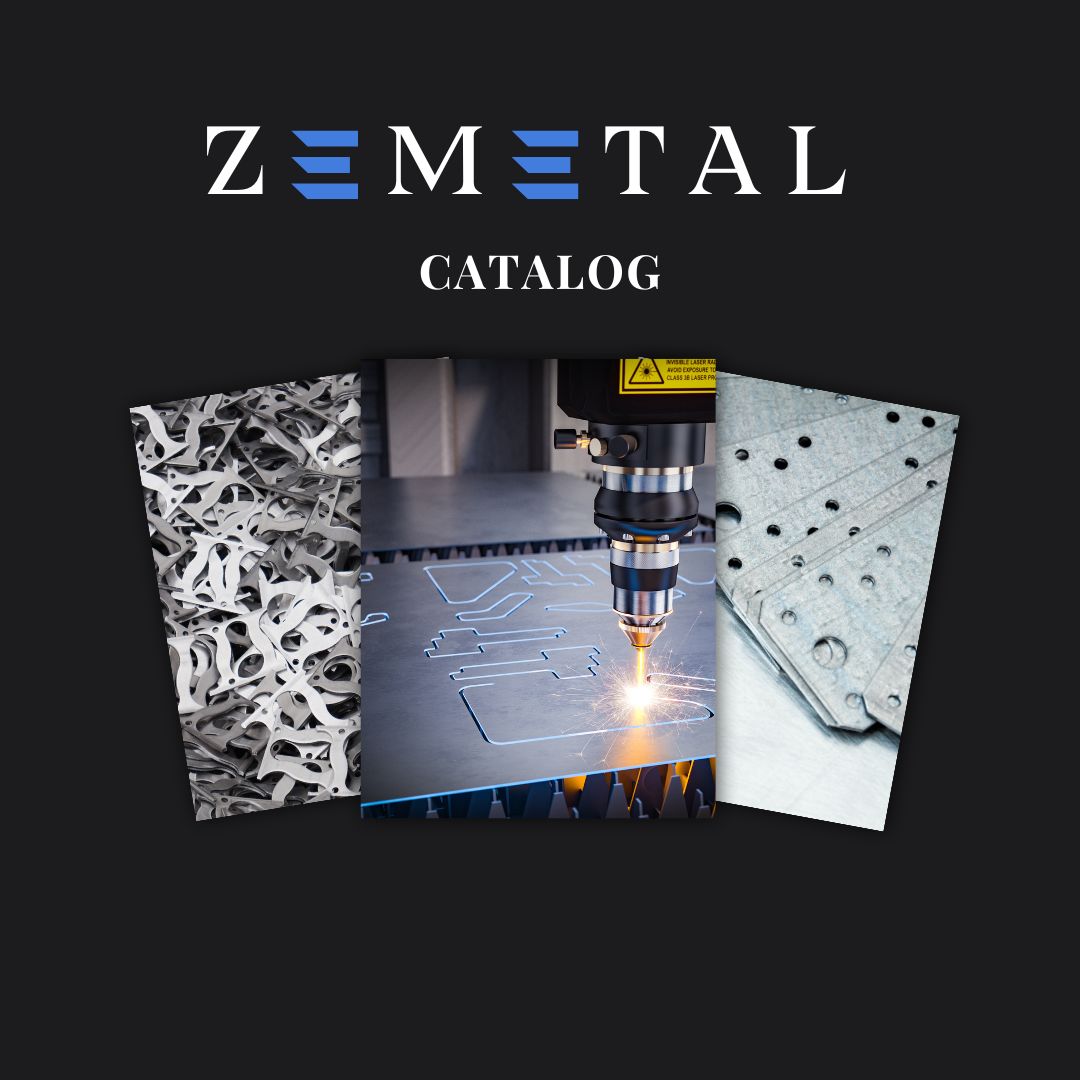Ever wondered how metal surfaces achieve that flawlessly smooth finish? The answer lies in the meticulous process of sand and shot blasting.
With decades of experience in metal fabrication, we understand the nuances of these techniques inside out.
Sand and shot blasting are crucial in preparing metal surfaces for further processing. These methods not only clean surfaces but also help in removing rust, old paint, and contaminants.
In this guide, we will delve into the details of both sand and shot blasting, exploring their benefits, applications, and best practices.
Keep reading to learn more.
1. The Science Behind Sand and Shot Blasting
Sand and shot blasting are integral techniques in metal fabrication, harnessing the power of high-velocity abrasive materials to modify the surface of metal products.The science behind these methods lies in the kinetic energy of the abrasive particles, which, when impacted against the metal, remove impurities, rust, and old coatings, preparing the surface for further treatment, like painting or coating.
These techniques also play a crucial role in enhancing the mechanical properties of the metal. The forceful impact of the abrasive materials not only cleans but also induces compressive stresses on the surface. The choice of abrasive material – be it sand, steel shots, or other specialized particles – determines the level of abrasiveness and the quality of the surface finish.
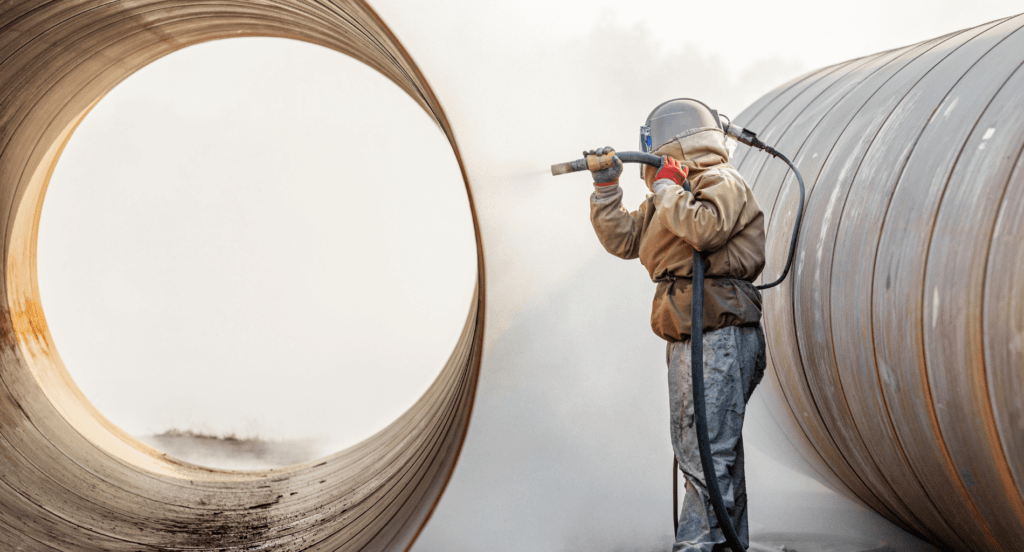
2. Benefits of Sand and Shot Blasting
Building on the scientific principles outlined in the previous section, sand and shot blasting offer a range of benefits that are pivotal in metal fabrication. Here are the key advantages these techniques provide:
Improved Surface Finish
Sand and shot blasting techniques are highly effective in achieving a uniform and smooth surface finish. This is particularly important for metal surfaces that are to be painted or coated, as it ensures better adhesion and a more aesthetically pleasing final product. The uniformity achieved through these processes also helps in revealing any surface defects that might need further attention.
Enhanced Durability and Longevity
One of the primary benefits of sand and shot blasting is the enhancement of the metal’s durability. The process induces a layer of compressive stress on the surface, which helps in mitigating the development of fatigue cracks. This, in turn, extends the lifespan of the metal product, making it more resistant to wear and tear, and less prone to failure under repetitive stress or load.
Effective Cleaning and Preparation
These blasting techniques are excellent for removing all forms of surface contaminants, including rust, scale, and old paint. This thorough cleaning is essential for ensuring the effectiveness of subsequent processes like coating or welding. It not only improves the quality of these processes but also prevents issues such as poor weld quality or coating failure due to impurities.
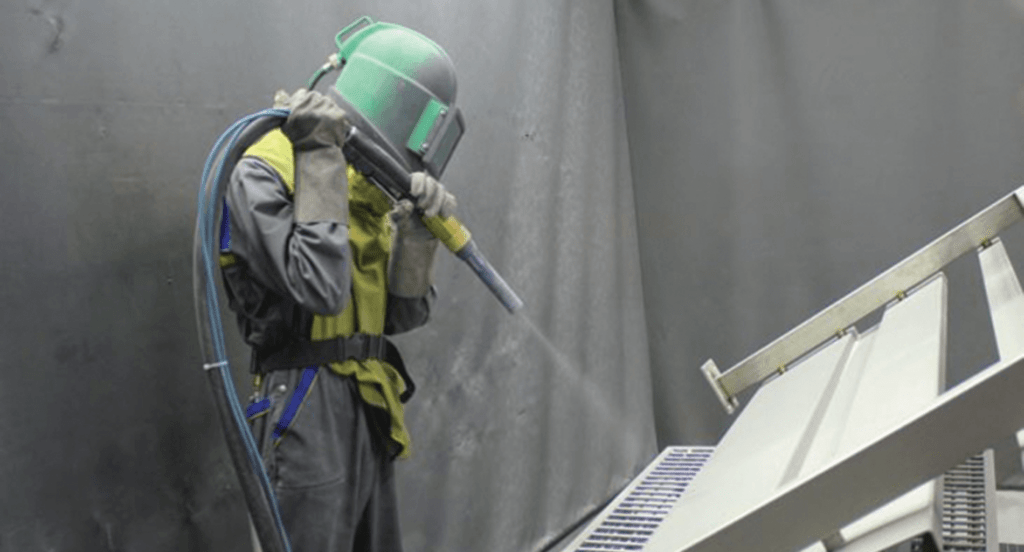
Increased Safety and Performance
Sand and shot blasting are pivotal in improving the safety and performance of metal products. These processes remove surface defects, ensuring a high-quality finish crucial for reliability in critical applications. Reflecting their growing importance, the shot blasting market is projected by Consegic to grow from USD 1257.60 million in 2022 to USD 1733.26 million by 2030, at a CAGR of 4.2%.
3. Innovations in Sand and Shot Blasting Technology
Following the exploration of the numerous benefits of sand and shot blasting, we now turn our attention to the latest technological advancements in these fields. Here are the key innovations that have transformed the process and efficiency of sand and shot blasting:
Abrasive Material Selection
Innovations in this area have led to a wide range of abrasives, each suited to different applications based on hardness, size, shape, and density. Modern materials include traditional sand, steel grit and steel shots, and environmentally friendly alternatives like walnut shells or recycled glass. The choice of abrasive impacts the aggressiveness of the blasting and the quality of the surface finish.
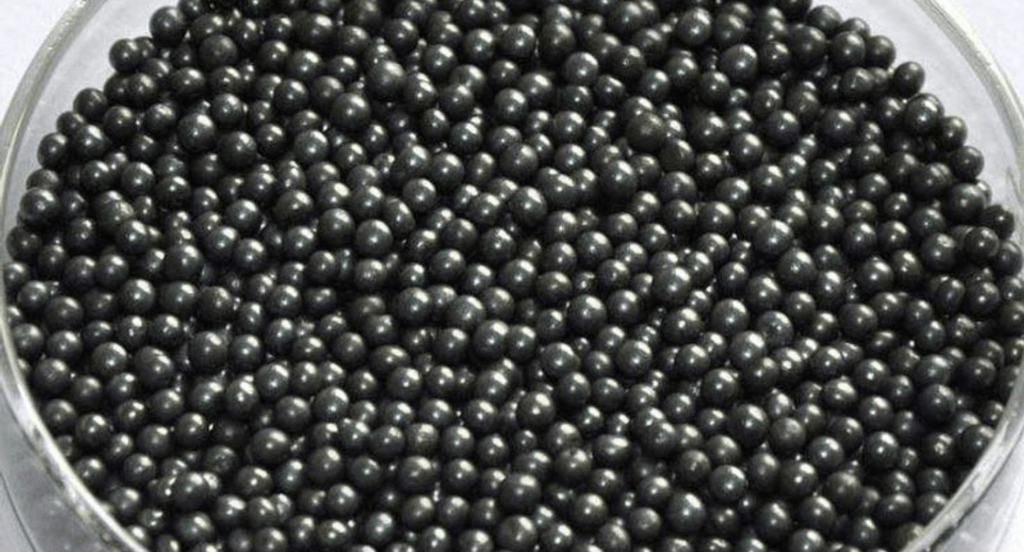
Blasting Parameters
Modern sandblasting technology allows for precise control over various parameters such as pressure, angle, and distance. This control is critical for achieving the desired surface finish and minimizing damage to the substrate. Advanced equipment comes with digital controls and monitoring systems that enable operators to adjust these parameters in real-time, ensuring consistent blasting across different surfaces and materials.
Efficient Delivery Systems
Innovations in delivery systems have enhanced the efficiency of sandblasting. For example, these systems, which include nozzles and hoses, are designed to maximize the velocity and pattern of the abrasive material. The latest designs are focused on reducing waste and increasing accuracy, allowing for more targeted blasting that conserves abrasive material while improving surface coverage.
4. Applications of Sand and Shot Blasting
After delving into the innovations in sand and shot blasting technology, it’s crucial to understand how these advancements translate into practical applications. Here are the key areas where sand and shot blasting are effectively utilized:
Surface Cleaning and Rust Removal
Sand and shot blasting is especially crucial in industries like shipbuilding, automotive, and infrastructure where metal components are exposed to harsh environments. Blasting effectively removes rust, scale, and old paint, preparing these surfaces for further treatments like painting or coating, thus prolonging the life of the metal components and structures.
Surface Preparation for Coating
In the aerospace, automotive, and construction industries, a properly prepared surface is essential for the effective application of paints and protective coatings. At Zemetal, these blasting techniques provide a roughened surface profile that enhances the adhesion of coatings, reducing the likelihood of peeling or chipping and ensuring a longer-lasting and more durable finish.
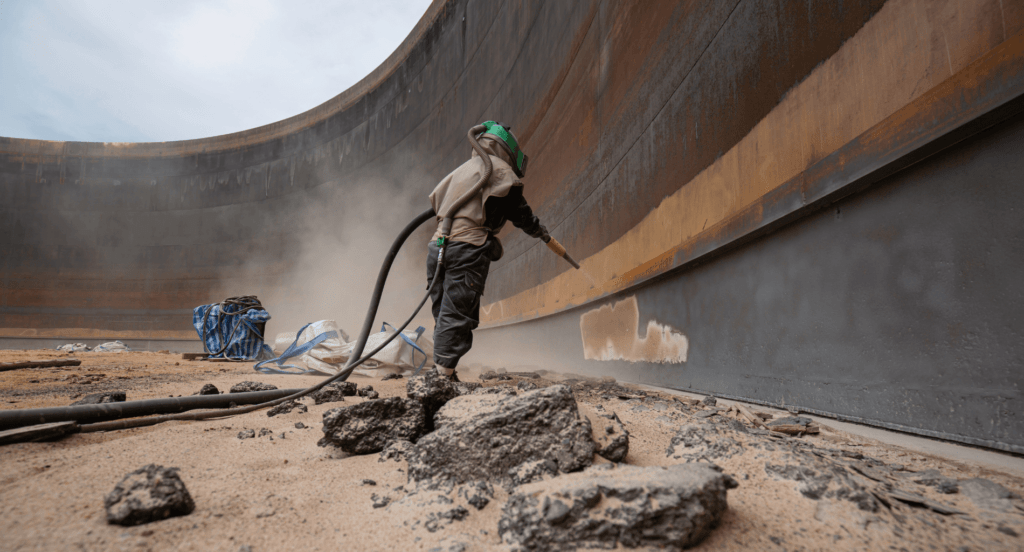
Stress Relieving and Hardening
This process is beneficial in the manufacturing of gears, springs, and other components that require increased resistance to fatigue and stress fractures. By bombarding the surface with steel shots, compressive stresses are induced, which strengthen the material and improve its fatigue life. This is a critical step in ensuring the durability and safety of components used in high-stress environments.
5. Comparative Analysis: Sand vs. Shot Blasting
After our discussion on the diverse applications of sand and shot blasting, it’s important to compare these two methods to understand their unique characteristics and uses. Here are the key differences and considerations:
Abrasive Material and Surface Impact
- Sand Blasting: Uses sand particles as the abrasive medium, which are effective for removing rust, paint, and other surface contaminants. This technique is particularly useful for creating a rough surface texture, ideal for subsequent painting or coating.
- Shot Blasting: Shot blasting involves steel shots or beads, which are less abrasive and more controlled. This method is preferred for its ability to strengthen the surface through peening, inducing compressive stress which enhances durability and resistance to fatigue.
Applications and Suitability
- Sand Blasting: Widely used across various industries for general surface cleaning and preparation, particularly where a roughened texture is beneficial. It’s ideal for surfaces that require thorough cleaning before applying coatings or paints.
- Shot Blasting: More suited for applications that require not just cleaning but also surface hardening. Industries such as automotive, aerospace, and heavy machinery prefer shot blasting for its dual ability to clean and strengthen parts, making it crucial for components that undergo significant stress.
Environmental and Safety Considerations
- Sand Blasting: Can generate a significant amount of dust, which requires stringent control measures to protect the environment and operator health. This includes using proper ventilation, dust collection systems, and personal protective equipment.
- Shot Basting: Generally produces less airborne dust due to the nature of the steel shots. This makes it a comparatively more environmentally friendly option, especially with advancements in dust collection technologies.
6. Best Practices in Sand and Shot Blasting Operations
Having compared sand and shot blasting, it becomes evident that implementing best practices in these operations is crucial for optimal results and safety. Here are the essential guidelines to follow for effective and safe blasting processes:
Proper Selection of Abrasive Material
Choosing the right abrasive material is vital for achieving the desired results in both sand and shot blasting. Factors like the hardness, size, and type of the abrasive material should be carefully considered based on the specific requirements of the project. For instance, finer abrasives are suitable for delicate surfaces, while coarser materials are better for heavy-duty cleaning and surface preparation.
Control and Precision in Blasting Parameters
Controlling and precisely adjusting the blasting parameters such as pressure, angle, and distance is essential for optimal results. Consistent monitoring and adjustment of these parameters ensure that the surface is treated uniformly without causing damage. In shot blasting, controlling the velocity and impact of the shots is particularly important for achieving the desired compressive stress on the surface.
The following table outlines key blasting parameters and their significance in ensuring optimal results in shot blasting, highlighting the importance of control and precision for uniform surface treatment and desired compressive stress:
| Parameter | Significance |
| Pressure | Determines the force of blasting, affecting the removal of surface materials and finish quality. |
| Angle | Influences the direction and efficiency of the blasting, impacting coverage and uniformity. |
| Distance | Affects the concentration and impact of the blasting media on the surface. |
| Velocity | Critical for controlling the speed of shots, impacting surface finish and stress distribution. |
| Impact of Shots | Dictates the intensity of surface treatment, crucial for achieving desired compressive stress. |
Ensuring Operator Safety and Environmental Compliance
Prioritizing the safety of operators and adherence to environmental regulations is a critical best practice. At Zemetal, this includes providing proper personal protective equipment (PPE), ensuring adequate ventilation, and implementing effective dust collection systems to minimize airborne particles.
7. 3 Factors to Consider When Choosing the Right Blasting Method
Building on the best practices outlined for sand and shot blasting operations, choosing the right method requires careful consideration of several factors. Here are the key aspects to evaluate when selecting the most suitable blasting technique for your project:
#1 Material of the Workpiece
The type and properties of the material being blasted are paramount in deciding whether to use sand or shot blasting. Softer materials might be damaged by the intensity of shot blasting, making sand blasting a more suitable option. Conversely, for harder metals that require not just cleaning but also surface strengthening, shot blasting is often the preferred choice due to its peening effect that enhances material durability.
#2 Desired Surface Finish and Texture
The required surface finish and texture of the final product play a significant role in the choice of blasting method. If the goal is to achieve a smooth, uniform finish, sand blasting may be more appropriate. However, for applications needing a textured surface to enhance coating adhesion or to induce specific surface stresses, shot blasting might be the better option.
#3 Environmental and Safety Considerations
Environmental impact and safety considerations are also crucial in choosing the right blasting method. Sand blasting can generate significant amounts of dust and requires stringent measures to protect the environment. Shot blasting, while generally producing less dust, still necessitates careful handling and appropriate safety measures. The choice should be informed by the ability to effectively manage these concerns.
Conclusion
Understanding the science and practical applications of sand and shot blasting is essential for any business involved in metal fabrication. These techniques not only enhance the quality and durability of metal products but also contribute significantly to efficiency and cost-effectiveness in production processes.
For businesses looking to explore the world of professional metal fabrication services, Zemetal is equipped with the knowledge, experience, and technology to cater to your specific needs. Contact us today.
Dive Deeper Into Our Resources
For some insightful reads, we’ve curated a list of recommended articles just for you:
Still haven’t found what you’re looking for? Don’t hesitate to contact us. We’re available around the clock to assist you.








